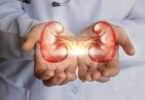The normal number of chromosomes in humans is 46, distributed in 23 pairs, the last being the X and Y sex chromosomes. These chromosomes constitute the genetic information of the human being. The fertilized egg receives one chromosome from the mother and one chromosome from the father to make up each of the 23 pairs of chromosomes, but sometimes an anomaly occurs that consists of the appearance of an extra chromosome in the 21st pair, which is known as trisomy of chromosome 21.
Trisomy of chromosome 21 is the most frequent chromosomal anomaly: it affects 1 in 700 children born alive in all races, without distinction of geographic environment or social class.
Trisomy 21 causes Down syndrome or mongolism, described by Dr. John Langdon Down in 1866.
In 95% of patients with this syndrome there is a trisomy of chromosome 21 (which means that there are three chromosomes number 21, when normally there are only two), and the remaining 5% present a chromosomal translocation (a change of fragments of genes between different chromosomes).
The relationship between maternal age and the risk of giving birth to a child with Down syndrome is firmly established: the risk increases from 32 years of age, with the age of greatest risk being from 45 years of age.
The most important signs and symptoms of Down syndrome are:
- Marked muscular hypotonia (lack of strength in the muscles).
- Mental retardation.
- Characteristic physiognomy with epicanthal folds and palpebral opening slanting up and out (skin fold at the inner corner of the eye) and depressed nasal root.
- Maxillary and palatal hypoplasia that determines the protrusion of the tongue (the maxillary bone of the face is poorly formed and the mouth is small, so that the tongue does not fit in it and sticks out).
- Internal anomalies, mainly of the heart and digestive system: ventricular septal defects, patent ductus arteriosus, duodenal atresia or stenosis (narrowing or lack of development of part of the intestine).
- Short fingers with hypoplasia of the middle phalanx of the fifth finger (lack of development of the middle phalanx of the little finger).
- Characteristic dermatoglyphics with the simian groove on the palm (altered fingerprint with a transverse crease on the palm of the hand, similar to that of the monkey).
- Some signs are very frequent or typical, such as muscular hypotonia, dermatoglyphics and, in the case of light-colored eyes (blue-green), Brushfield spots, small white spots located concentrically in the upper third of the eye. inner iris (not seen in dark eyes).
- Adults usually have an intelligence quotient (IQ) of 25 to 50, but it is considered that the level that these people are capable of reaching may vary depending on the stimuli that the patient receives from their relatives and their environment.
Mental retardation is the most characteristic sign in Down syndrome.
Among the diseases that most frequently affect them are:
- Infections: Children with this syndrome are more susceptible to infections such as colds, otitis, bronchitis and pneumonia.
- Vision defects: a high percentage of these children (more than 60%) suffer from vision problems such as nearsightedness, farsightedness, cataracts or esotropia (crossed vision).
- Hearing impairment, which may be due to fluid in the middle ear, defects in the middle or inner ear, or both.
- Intestinal malformations: many babies are born with these defects, which must be corrected by surgery.
- Thyroid disorders, such as congenital hypothyroidism.
- Heart defects: About half of children with Down syndrome are born with heart defects, some mild that can be treated with drugs, and others that require surgical intervention. For this reason, all babies born with this syndrome should be evaluated by a pediatric cardiologist and undergo an echocardiogram (ultrasound examination of the heart) during the first two months of life, with the aim of detecting and adequately treating any possible problems. cardiac.
- Alzheimer’s disease: people with Down syndrome are more likely than the rest of the population to develop Alzheimer’s disease (which is characterized by a progressive deterioration of memory, disorientation, and changes in character and personality, among other problems) and, furthermore, that this occurs early. It is estimated that a quarter of adults with Down syndrome over the age of 35 have symptoms of Alzheimer’s.
- Leukemia: This type of cancer also affects children with Down syndrome more often.
- There is no treatment for Down syndrome, except for integration and special education programs aimed at developing the child’s intellectual abilities.
- The survival of patients with Down syndrome depends on the severity of the visceral malformations: these malformations determine the death of many of them in the first years of life, so that patients older than five years already have reasonable life expectancies long (between 50 and 60 years).
- The secondary dangers that threaten older children and adults are the easy development of leukemia (the risk is increased 20 times compared to normal) and the development of very early Alzheimer’s disease.








